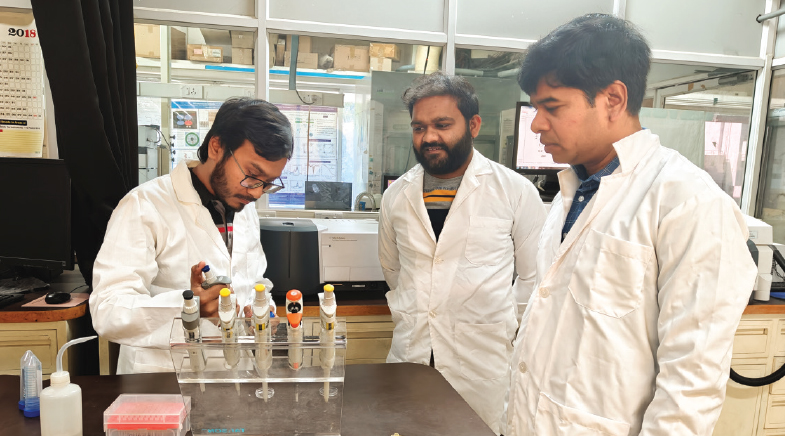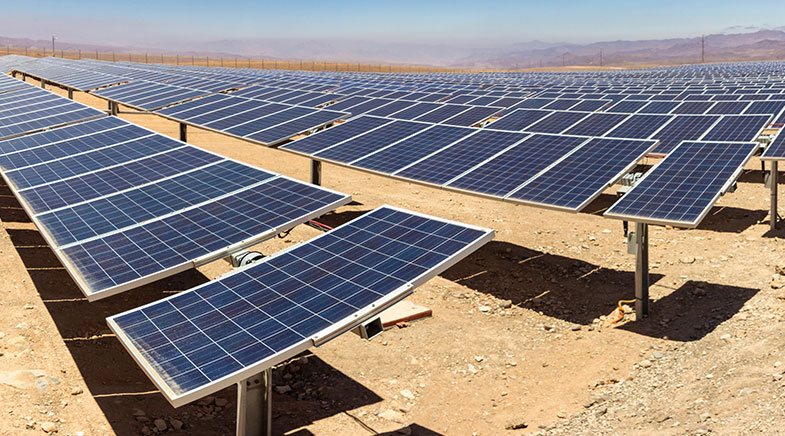It takes two to go green
-
- from Shaastra :: vol 03 issue 04 :: May 2024

A new hybrid material can efficiently generate clean fuel — and treat polluted water for reuse in irrigation.
A novel nanocomposite of cobalt oxide and vanadium dioxide can photocatalyse two different processes — hydrogen generation and degradation of a toxic organic dye from effluent water. The new material, named CV-21 after its constituent elements, will "catalyse a sustainable future," according to the study (bit.ly/hydrogen-effluent).
The research team, led by Suresh Gosavi, Vice Chancellor of Savitribai Phule Pune University, was aware of cobalt oxide's magnetic, electronic and catalytic properties – such as large surface area and thermal stability – that make it a suitable photocatalyst for various processes like degrading chemical dyes, generating hydrogen from water, and in solar and lithium-ion batteries to generate energy. The researchers knew that the compound is more effective when combined with vanadium dioxide. "We, therefore, worked on making a novel material, which is a nanocomposite of both," says Ratna Chauhan, corresponding author of the study.
Nanocomposites are hybrid materials made of two or more compounds, each of which is smaller than 100 nanometres. The researchers made the nanocomposite through the hydrothermal treatment process, which entails adding the precursors of the constituent compounds into water and heating this in a controlled manner to around 180°C for 24 hours, and then drying the fraction. They made three different nanocomposites with varying ratios of the two compounds.
"Creating a nanocomposite as a photocatalyst is a good idea; these are the materials of the future."
CV-21, which has cobalt oxide and vanadium dioxide in the ratio of 2:1, was found to be the most efficient in catalysing both the processes – generating hydrogen and breaking down the dye. It showed a hydrogen generation rate of 2,270 μmol/h/g and a 93% degradation of the dye Victoria blue B within 10 minutes. The researchers believe that the super photocatalytic activity of CV-21 could be due to the narrow band gap of 1.67 eV in the nanocomposite, which allowed the most efficient utilisation of visible light. The catalyst was reused, and though its efficiency dipped marginally in each reuse cycle (by 25% in the fifth round), it was within the range of a reusable material.
Chauhan adds that the team tested the treated water for bio-compatibility, noting that seedlings irrigated with it grew better than those irrigated with regular water. "The dye was broken down into carbon dioxide, water and smaller, non-toxic organic molecules, which provided nutrients for plant growth," she says.
"The hydrogen yield from the experiment is impressive," says Dattatray Late, Professor at the CSIR-National Chemical Laboratory, Pune, who was not associated with the research. "Creating a nanocomposite as a photocatalyst is a good idea; these are the materials of
the future."
Have a
story idea?
Tell us.
Do you have a recent research paper or an idea for a science/technology-themed article that you'd like to tell us about?
GET IN TOUCH














